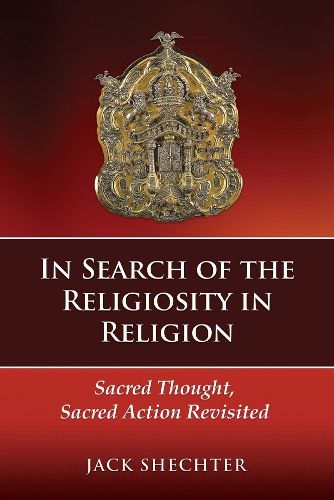Readings Newsletter
Become a Readings Member to make your shopping experience even easier.
Sign in or sign up for free!
You’re not far away from qualifying for FREE standard shipping within Australia
You’ve qualified for FREE standard shipping within Australia
The cart is loading…






One of the major contributions to Judaism in our time by Martin Buber is the distinction he stressed between religion and religiosity. Religion is the institutional, carefully structured, formal aspects of the faith community containing established doctrine and mandated action. Religiosity is the inner meaning, the irreducible spirit, the essence of the doctrine and practices of the faith community, that which constitutes the essential purpose of the institutional structure. Thus, in Buber’s landmark unpacking of the life and literature of Hasidism, he pointed out that what the tzaddikim (spiritual leaders) considered decisive in the observance of religious ritual was the intent and spirit, the aim of the action, the inner purpose of the panoply of practices the faithful were engaged in. Each person was obliged to unite action with its purpose and thus develop wholeness as a truly religious personality.
This book is designed to excavate, as it were, the religiosity embedded in a selection of Judaism’s faith associations and religious practices.
$9.00 standard shipping within Australia
FREE standard shipping within Australia for orders over $100.00
Express & International shipping calculated at checkout
One of the major contributions to Judaism in our time by Martin Buber is the distinction he stressed between religion and religiosity. Religion is the institutional, carefully structured, formal aspects of the faith community containing established doctrine and mandated action. Religiosity is the inner meaning, the irreducible spirit, the essence of the doctrine and practices of the faith community, that which constitutes the essential purpose of the institutional structure. Thus, in Buber’s landmark unpacking of the life and literature of Hasidism, he pointed out that what the tzaddikim (spiritual leaders) considered decisive in the observance of religious ritual was the intent and spirit, the aim of the action, the inner purpose of the panoply of practices the faithful were engaged in. Each person was obliged to unite action with its purpose and thus develop wholeness as a truly religious personality.
This book is designed to excavate, as it were, the religiosity embedded in a selection of Judaism’s faith associations and religious practices.